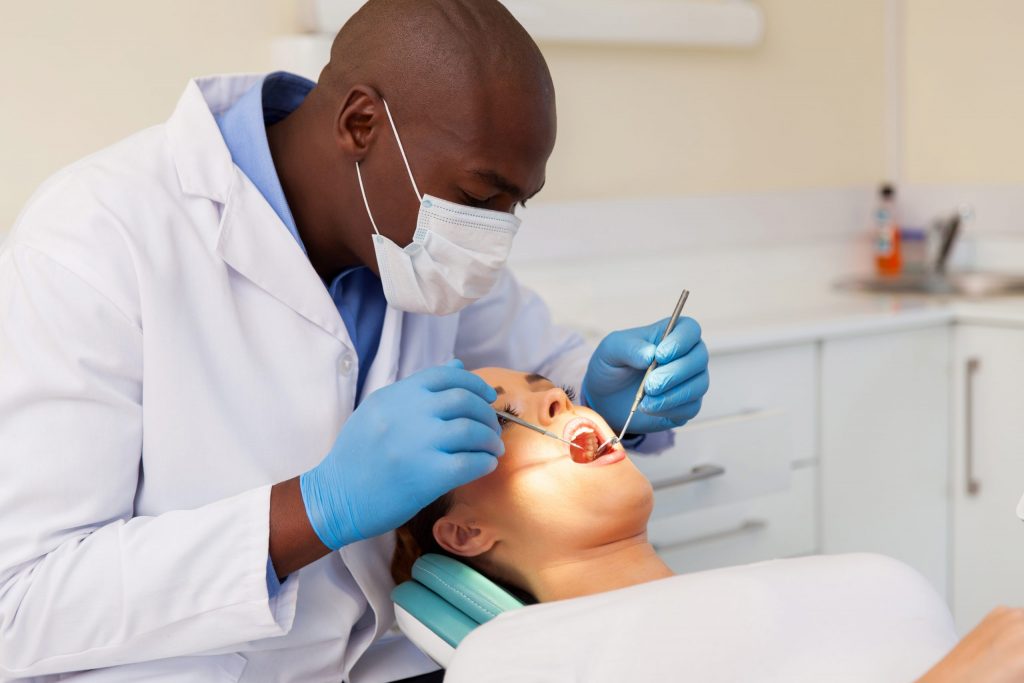The Advantages of Routine Visits to a Dentist Eugene Oregon
The Advantages of Routine Visits to a Dentist Eugene Oregon
Blog Article
Check Out the Range of Dental Issues Dentists Commonly Deal With
Dental professionals are charged with dealing with a wide spectrum of dental problems, each needing specialized understanding and methods. From the prevalent trouble of dental caries triggered by bacterial task to the extra dangerous development of periodontal illness, dental professionals need to be experienced at very early discovery and treatment. Tooth level of sensitivity, often resulting from worn enamel, adds another layer of complexity, while the very early identification of oral cancer cells can be life-saving. Additionally, misaligned attacks require customized treatment strategies to improve both performance and aesthetic appeals. What specific techniques do dental practitioners utilize to handle these varied difficulties properly?
Dental Caries and Dental Cavity
Tooth cavities, likewise recognized as oral cavities, are created by the demineralization of tooth enamel due to acid-producing bacteria in the mouth. If left unattended, tooth cavities can lead to substantial oral issues, including infections and tooth loss.
To identify tooth cavities and tooth degeneration, dentists use a mix of visual examinations, oral X-rays, and often laser fluorescence devices. For even more innovative degeneration, a dental practitioner may need to get rid of the compromised cells and recover the tooth with dental fillings made from materials such as composite material, amalgam, or porcelain.
Preventive steps are extremely important in combating tooth cavities and dental cavity. Normal dental examinations, correct cleaning and flossing methods, and a balanced diet regimen reduced in sweet foods and beverages are basic practices that sustain dental health and minimize the danger of oral caries.
Periodontal Disease

This triggers the gums to pull away from the teeth, producing pockets that become infected. As the body's immune system deals with the microorganisms, the bone and connective tissue that hold teeth in area are broken down.
Dentists diagnose periodontal illness with scientific evaluation and periodontal penetrating to measure pocket depths around the teeth. Therapy may include scaling and origin planing to remove tartar and bacteria from tooth surfaces and beneath the gums.

Tooth Sensitivity
Beyond gum condition, an additional typical dental problem that clients regularly encounter is tooth level of sensitivity. Defined by a sharp, short-term discomfort in reaction to stimulations such as warm, chilly, sweet, or acidic foods and drinks, tooth sensitivity can considerably impact an individual's quality of life.
Several variables add to the growth of tooth level of sensitivity. Aggressive brushing, using rough tooth paste, and the consumption of acidic foods and drinks can wear down enamel. In addition, dental procedures, fractured teeth, and periodontal condition can subject the dentin. To minimize tooth level of sensitivity, dental experts may suggest utilizing tooth paste formulated for delicate teeth, fluoride treatments to enhance enamel, or oral bonding to cover revealed dentin. In severe situations, advanced treatments such as periodontal grafts or root canals could be needed.
Inevitably, addressing tooth level of sensitivity calls for a comprehensive method that consists of both preventative procedures and targeted treatments to ease discomfort and secure the oral structures.
Dental Cancer Cells
Dental cancer, a possibly life-threatening and serious condition, usually flies under the radar in routine dental treatment discussions. This sort of cancer cells can impact any type of component of the dental tooth cavity, including the lips, tongue, cheeks, flooring of the mouth, tough and soft palates, sinuses, and throat. Early detection is important for successful treatment, yet many situations are diagnosed at sophisticated phases because of refined initial symptoms.
Misaligned Bites
Misaligned bites, additionally called malocclusions, are an usual like it dental problem that can significantly affect both dental health and wellness and overall lifestyle - dentists eugene. These problems take place when the upper and reduced teeth do not line up appropriately, resulting in difficulties in attacking, chewing, and even speaking. Malocclusions can be identified right into different types, consisting of overbites, underbites, crossbites, and open attacks, each providing special difficulties that need tailored therapy approaches
The reasons for misaligned attacks vary and can include genetic aspects, early loss of key teeth, thumb sucking, and injuries to the jaw. Signs frequently include pain or pain in the jaw, frequent biting of the inner cheeks, and a raised risk of dental caries and gum tissue disease due to difficulty in preserving oral health.
Orthodontists and dental practitioners employ a variety of interventions to deal with misaligned bites, from conventional dental braces and clear aligners to more innovative medical treatments in severe cases. Early medical diagnosis and therapy are essential to prevent issues such as temporomandibular joint (TMJ) problems and learn the facts here now irregular endure teeth. Through thorough analysis and customized treatment strategies, dental experts play a crucial role in dealing with malocclusions and enhancing people' dental function and looks.
Verdict
Dental practitioners deal with a range of dental issues, each with distinct obstacles and treatment methods. Tooth cavities and dental caries result from microbial activity that jeopardizes tooth enamel, while gum tissue condition can escalate from gingivitis to severe periodontal conditions. Tooth sensitivity involves discomfort from thermal stimuli, requiring details care. Early detection of dental cancer cells is crucial for efficient treatment. Misaligned attacks impact both oral health and lifestyle, frequently requiring orthodontic or medical solutions to remedy.
To detect tooth cavities and tooth decay, dental practitioners employ a combination of visual exams, dental X-rays, and sometimes laser fluorescence tools.Beyond periodontal illness, one more usual dental concern that patients frequently run into is tooth level of sensitivity. In addition, dental procedures, broken teeth, and periodontal illness can subject the dentin. To minimize tooth sensitivity, dental experts might recommend using tooth paste developed for delicate teeth, fluoride treatments to enhance enamel, or dental bonding to cover exposed dentin. Tooth cavities and tooth degeneration result from microbial activity that jeopardizes tooth enamel, while gum disease can rise from gingivitis to serious gum problems.
Report this page